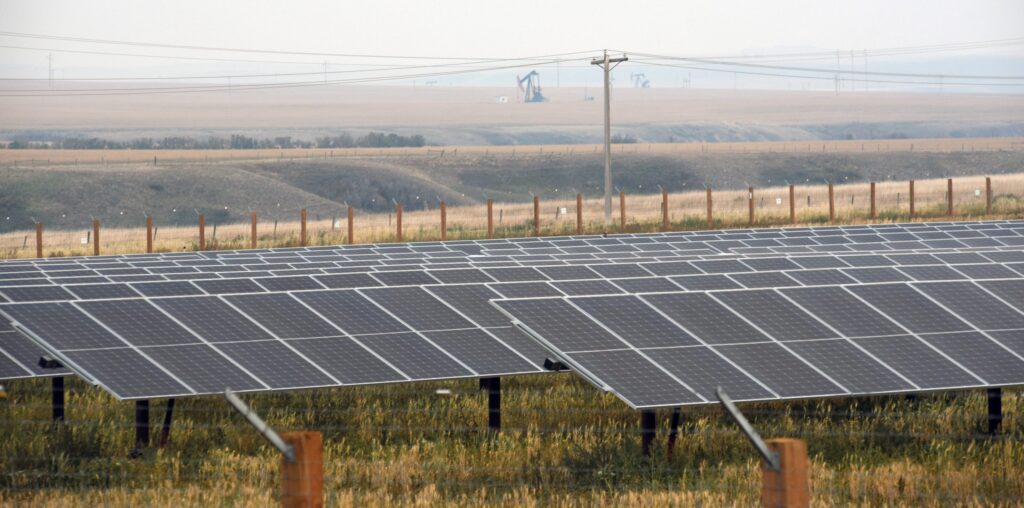Alberta’s premier insists new restrictions on where wind and solar projects can be built will still leave plenty of opportunities for renewable energy development.
On top of 35-kilometre buffer zones around “pristine viewscapes” and prime farmland, the province is considering keeping wind turbines and solar panels away from native grasslands as well as farmland that is irrigated or could be irrigated.
“There’s lots of places in Alberta to be able to develop wind and solar. Rooftop solar, in particular, on buildings, commercial developments, industrial developments, and homes. We’ll be working on ways to incentivize that,” Smith told reporters Wednesday in Calgary.
“We want to make sure we’re not compromising agricultural land, because some things are not dual use, and we want to make sure landowners are ultimately protected.”
Conservationists believe the move is rooted in politics rather than science, because the proposed buffers do not include oil and gas developments.
“We want to see those restrictions applied across all industries, otherwise they are not going to effectively protect, what we feel, are the most important and sensitive regions,” said Ruiping Luo, with the Alberta Wilderness Association.
Luo has been mapping possible buffer zones, based on restrictions already announced and new ones that have been discussed during government consultation sessions.
“Based on these additional restrictions, you’re looking at possibly 36-39 per cent of Alberta will no longer be available for [renewable energy] development,” she told CityNews.
On Wednesday, CityNews asked the environment minister for an update on the rules and whether or not they’ll also be applied to oil and gas producers, but she refused to answer.
“I’m happy to pass those questions to Minister [Nathan] Neudorf,” Rebecca Schulz said at a Wednesday announcement.
A Thursday statement from Neudorf’s office, the affordability and utilities ministry, said the rules for solar and wind will not be the same as oil and gas because different projects have varied impacts.
“For example, wind projects have a significant vertical visual impact due to their height, which can be seen from large distances, while having a limited footprint. In contrast, utility-scale solar projects have an extensive footprint that impacts the land it is located on,” it said.
“Alberta is a global leader in responsible energy development, with some of the most stringent environmental standards for our oil and gas industry in the world, and we intend to hold our renewables industry to high standards as well.”
The new rules follow a government-imposed, seven-month moratorium on renewable projects which ended in February. The Pembina Institute says 53 wind and solar projects were abandoned in Alberta after it was announced.
“We know that that was a mistake from a jobs and investment perspective,” Sarah Elmeligi, NDP Environment Critic, told CityNews.
“So, we will continue to champion for diversifying the energy sector so that we can realize those investments and the thousands of jobs that come with them.”
Neudorf’s office said the government is “pursuing the necessary policy changes by the end of 2024.”

